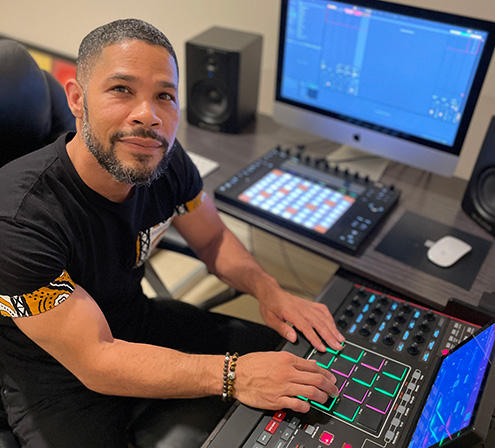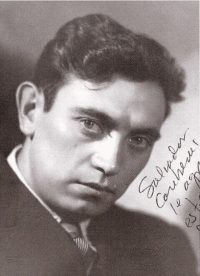by Jarrett Hoffman

•Tonight: Apollo’s Fire conjures up a storm in Akron, singer-songwriter Candace Campana visits the Canton Symphony, and Oberlin Opera Theater presents a pair of one-acts
•Interesting read: learn about the documentary film scores of Case student Rafique Illyas-Watson (pictured)
•Almanac: from France to Mexico, François Couperin to Salvador Contreras
HAPPENING TODAY:
At 7:30 pm in Akron’s First United Methodist Church, Apollo’s Fire will give the first of four performances of “Storms and Tempests.” The forces of nature present themselves in works such as Vivaldi’s concerto Tempesta di Mare (“Storm at Sea”) featuring violinist Alan Choo, Marais’ tempest scene from Alcione, and arias sung by soprano Amanda Forsythe. Tickets are available online.
Also at 7:30, Youngstown-based singer-songwriter Candace Campana will bring her blend of country and pop to the Canton Symphony and its genre-blending Divergent Sounds series. Get tickets here.
And at 8 at Hall Auditorium, Oberlin Opera Theater will present a double-bill of one-acts: a rustic love story (Jacques Offenbach’s Le mariage aux lanternes) and a comedy full of mistaken identities (Rossini’s L’occasione fa il ladro). Jonathan Field directs, and Joseph Mechavich conducts the Oberlin Orchestra. Read a preview article by Mike Telin here, and get tickets here.
INTERESTING READ:
An article from Case Western shines a spotlight on Rafique Illyas-Watson — a graduate student in historical musicology and a composer of electronic music — who has recently had two documentary film scores featured in local festivals.
Make Your Mark, which was screened at the Greater Cleveland Urban Film Festival, is about visual artists working with teens to paint a mural on East 130th Street during the pandemic (watch it on YouTube). And The House Next Door, which premiered at the Chagrin Documentary Film Festival, focuses on the effects of the foreclosure crisis on Cleveland (watch a trailer here).
The article also focuses on the importance of hip-hop to Illyas-Watson, who leaned on his knowledge of the genre when he was learning to write electronic music. “As a musicologist, I want to be in a position after graduation for my work to still be impactful for the hip-hop community,” he said. “It’s where I was developed and I already owe my career to them.”
TODAY’S ALMANAC:
Today we begin in France and end in Mexico.

Franny also played the harpsichordist, and it is his works for that instrument that have made him most famous. His four collections of solo harpsichord music, numbering over 230 pieces, have been admired by and provided inspiration to such figures as J.S. Bach, Brahms, Ravel, and Thomas Adès.
Les Barricades Mystérieuses is one of the most popular pieces from those suites. For something a little different, listen to a version arranged for harpsichord and lute here, performed here by Jean Rondeau and Thomas Dunford.

When that class was dropped from the curriculum, the four composers formed the Grupo de Jóvenes Compositores (“Group of Young Composers”) almost as a show of protest, giving their first concert in 1935. Fortunately a journalist reviewing the concert came up with a snappier name: Grupo de los Cuatro, in the same vein as the Russian “Mighty Five” and the French Les Six.
Before turning to serialism in the mid-1960s — a decision that didn’t appeal to all of his fans — Contreras wrote in a unique brand of neoclassicism with an emphasis on counterpoint. A great example is the early String Quartet No. 2 (1936). You can follow along with the score while you listen to a performance by the Cuarteto Latinoamericano here.


